Perfect Pitch
with Lola Odessey Waters
Not sure how to recite the beautiful prayers that come from our Tibetan Buddhist lineage? Ever felt frustrated because you couldn’t pronounce a Buddhist mantra?
Join us and learn how to pronounce prayers and chants, and get a better understanding of the process behind translating them. Enhance your practice by learning Tibetan Buddhist recitations including rhythm and intonation for prostrations, refuge, offerings, dedications, Vajrasattva and Medicine Buddha mantras to name a few. In addition, familiarize yourself with the Tibetan alphabet and the meanings of common words.
Learn everything you wanted to know but were afraid to ask! Here’s your opportunity to address questions like, “What’s the difference between spoken and written Tibetan?” or “How do I sound out unknown words?”
Lola Odessey Waters, who completed the FPMT’s Translator’s Program and is the French interpreter for His Holiness the Dalai Lama, will help us learn how to pronounce and recite Tibetan plus other juicy language tidbits.
Once we have the confidence to pronounce Dharma words, we’ll be better able to concentrate on the real job of using them to transform our minds!
Additional Materials
Recordings
About the Teacher

Lola Odessey Waters was born in the UK and raised in Southern France. She returned to the UK to pursue undergraduate work in Environmental and Media Studies while participating in community projects in Nepal, Kenya, Morocco, USA and UK.
In 2018, she traveled to India and over the next two years she completed the Lotsawa Rinchen Zangho Translator and Interpreter program where she learnt both spoken and classical Tibetan.
Lola says: When I started learning Tibetan, I made one wish “May I learn Tibetan quickly, so that at least once in my life I can interpret for His Holiness the Fourteenth Dalai Lama.” Causes and conditions have led to her currently working as the French interpreter for HH Dalai Lama and Institute Vajra Yogini where she currently lives.
Lola’s aspiration: “I hope that in the future, I can combine my understanding of the environment and Buddhist philosophy in order to develop study programs addressing climate change by understanding our inner world.”


